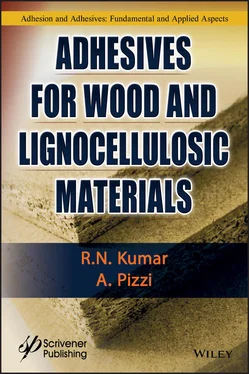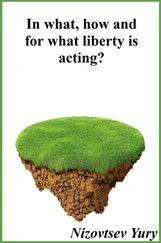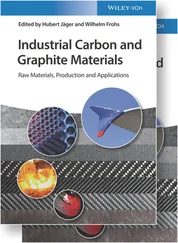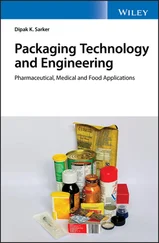1 ...8 9 10 12 13 14 ...21 In the case of wood cells, cell lumen dimensions thus fall on the micron range. Perforation plates at the cell extremities and pits on the lateral cell walls constitute additional cavities between adjacent cells. Such cavities have diameters in the order of microns and may thus be termed “micropores”. A microscopic porous network consequently imparts flow pathways within a solid wood block. It follows that adhesive penetration into cell lumens and “micropores” falls into the dimensional domain of microscopic penetration. As expected, microscopic penetration is best evaluated with microscopic techniques. Optical microscopy and scanning and transmission electron microscopy (SEM/TEM) have been utilized with success to probe adhesive microscopic penetration [31, 34, 35, 38].
Adhesive variables (MW distribution), substrate variables (wood surface roughness and moisture content), and processing variables (adhesive cure method) influence microscopic penetration of adhesives in wood [31, 38]. Wood surface energy and adhesive surface tension are also important parameters of micron-scale penetration [39].
1.5.2 Other Wood-Related and Process-Related Factors
Other wood-related and process-related factors that have an influence on adhesive penetration are direction of penetration with respect to the wood structure, permeability, porosity, roughness, surface energy, temperature, pressure, and time [27, 40–43].
1.6 Effect of Hierarchical Structure of Wood on Adhesive Penetration
The flow of liquid resin into the porous structure of wood results in filling the cell lumens. The gross penetration occurs when resin diffuses into the cell wall or flows into micro fissures. Hydrodynamic flow is caused by an external compression force due to clamp pressure or pressure exerted by the hydraulic press. Flow then proceeds into the interconnected network of lumens and pits, with flow moving primarily in the path of least resistance [44].
The flow path of the liquid adhesive into the wood is determined by the resistance to the hydrodynamic flow. The least resistance is in the longitudinal direction through the lumens in the long and slender tracheids of softwoods, or through the vessels of hardwoods. Since vessels are connected end to end with perforation plates and no pit membrane, this cell type dominates the penetration of adhesives in hardwoods. Using optical microscopy, Kamke and Lee observed the presence of resin in pit chambers of both hardwood and softwood species and in cell lumens as a result of entry of the resin through a pit [44].
The rheology of the adhesives plays a significant role in the adhesive penetration. Polymeric adhesives exhibit non-Newtonian behavior [45]. Also, the capillary pathways through cell lumens and pits are tortuous. As a result, penetration of the adhesives through wood is further complicated.
Waterborne adhesives, such as the phenolics and amino resins, are heterogeneous with unique distribution of MWs. They are prone to separation (1) when the water is absorbed by the cell wall and (2) when the high MW polymer molecules are trapped by the pit membrane into different depths depending on the MW of the polymer (comparable to gel permeation chromatography). Because of the above wood-related factors, the influence of fluid dynamics of the adhesives on its penetration into wood cannot be generalized. Gross penetration can happen with most types of resin at low viscosity, while cell wall penetration can occur only with resins having small MW components. In order to determine what should be the critical molecular size of the adhesives below which they can penetrate into the cell wall, Tarkow et al. [46] studied the critical MW of polyethylene glycol (PEG) needed to penetrate the cell wall of Sitka spruce. Their study showed that the critical MW of PEG was 3000 at room temperature. MW fractions less than 3000 are common in the case of phenolic, amino resins, and isocyanate resins and therefore these resins can be expected to penetrate into the cell wall. Further, prior to polymerization, adhesives penetrating the cell wall swell and plasticize the wood. This is an additional factor in favor of penetration of these resins into the cell wall. This has been reported for pMDI and low MW PF adhesives [32, 47, 48].
While discussing the importance of gross and cell wall penetration with respect to the adhesion mechanisms, Frihart proposed four scenarios [49]. In the first case of micrometer penetration, the adhesive occupies the free volume within the cell wall—thus inhibiting shrinking and swelling. In the second case, there can be mechanical anchoring between the cured adhesive and the substrate. The third case is the formation of interpenetrating polymer network that is made up of the cross-linked adhesive within the free volume of the cell wall. The last case claims the formation of chemical cross-links with the cell wall polymeric components.
1.7 Wood Factors Affecting Penetration
The actual penetration depth of solution or adhesive depends on the permeability of wood to liquids, the technological methods, and physicochemical properties of the specific adhesive. In the case of liquid flow through porous material under ideal conditions with no interactions occurring between the liquid and the porous material, the permeability is defined by Darcy’s law [50]:

where Q is the liquid volume flow [m 3s –1], K is the specific permeability of wood [m 2], A is the area perpendicular to the liquid flow [m 2], L is the sample length in the direction of flow [m], η is the dynamic viscosity of the liquid [Pa s], and Δ P is the pressure gradient [Pa]. As described by Darcy’s law, the pressure gradient Δ P is the cause for the liquid penetration into wood.
The permeability and surface energy are the two wood-related factors controlling adhesive penetration [44]. Permeability varies with species and direction (e.g., tangential, radial, and longitudinal). However, longitudinal permeability may be as much as 10 4times greater than transverse permeability [51]. Wood species with low permeability, such as Douglas-fir heartwood, severely restricts resin penetration in the radial and tangential directions. High permeability of the wood surface may be problematic to adhesive bonding if this leads to starvation at the bondline. Thus, bonding endgrain is difficult [44]. There are earlywood and latewood differences, as well as heartwood and sapwood differences. Pit aspiration sometimes occurs in softwoods during drying [51], thus severely reducing permeability. White [52] noted greater penetration of phenol-resorcinol into earlywood than latewood cells of southern pine.
1.8 Influence of Resin Type and Formulation on Penetration
The penetration of adhesives in wood is influenced by the resin viscosity, its MW and MW distribution, resin solid content, and the surface tension. It has to be kept in mind that the curing process may lead to a change in the above characteristics (e.g., viscosity, MW, etc.). Hence, penetration may be influenced during the curing process. Additives that influence the curing behavior may affect the penetration [44].
Hse reported a correlation between penetration and contact angle for PF and southern pine wood [53]. The author employed 36 formulations to determine the contact angle, and its influence on cure time, heat of reaction, plywood shear strength, percent wood failure, bondline thickness, and cure shrinkage. Penetration was not measured, but assumed to be inversely proportional to bondline thickness (thickness of cured adhesive between the veneers). Penetration increased with increasing caustic content. There were no clear trends observed for penetration in relation to adhesive solids content or formaldehyde–phenol mole ratio.
Читать дальше













